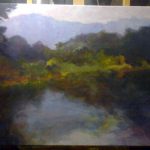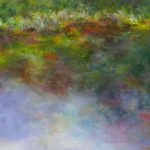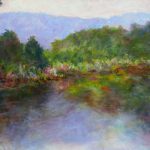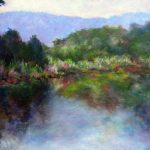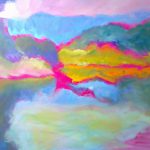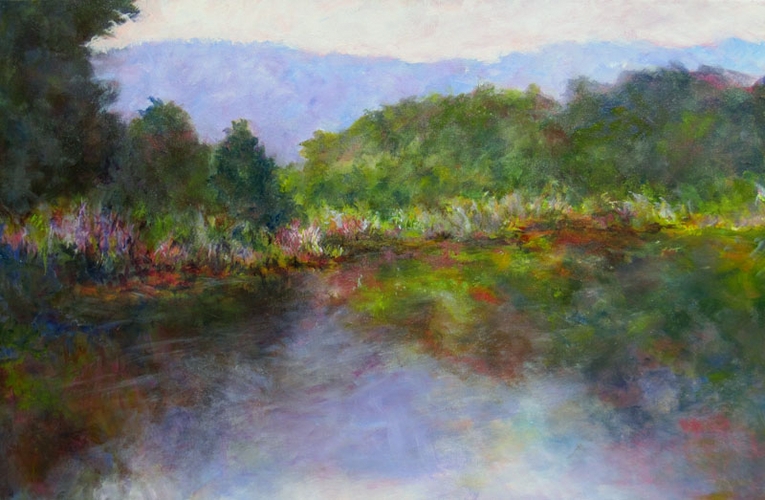
The magic of mediums is that there is a painting medium for just about every type of application, especially with acrylics. Want to paint very texturally? Impasto Gel or Modelling Compound. Want matte paint? Matte Medium & Varnish. Need more working time? Slow or Thick Slow Medium. But sometimes you’ll find that there is one medium that you use, time and time again. For me, the workhorse in my studio is the Clear Painting Medium.
I love this medium. Why? I just love how it makes Interactive feel – it’s a creamy mid-viscosity medium and when added to the paint, Interactive becomes very easy to apply. The paint goes on smoothly and sensuously, and it adds just enough working time for my style – not too much, not too little. After all, one of the reasons I paint with acrylics is because they dry quickly, so I can layer and progress in a relatively fast manner. The Clear Painting Medium works great for glazing, as well as for wet-over-dry applications, which is a traditional acrylic technique. An added bonus – it works great with other professional acrylics too.
Early Evening, Summer , is a recent painting of mine, and I used the Clear Painting Medium extensively in this piece. This is 24 x 36 on canvas, and was painted in my very hot studio, which means Interactive was drying very fast because of the warm air and fan! In the first stage, I added a liberal amount of medium to the paint on my palette so I could block in the major light and dark masses. Next, I added it to the color mixtures so I could establish my values and local color. Then, as I was adjusting each mass for warm and cool temperatures and to adjust values, I would often apply some paint, and then dip my brush into the medium to help extend it and merge the edges. I also applied medium to my painting first, and then painted into the couch to get very soft transitions of color. Because the Clear Painting Medium is a mid-viscosity medium, it does not drip. I used it in the last stages for glazing, using about 80-90% medium to 10% paint. If my glaze was too strong, a little spritz of water and I was able to wipe the glaze back and soften it, too.
This wet-over-dry painting technique, using medium to help blend and fuse the edges, worked great in the water reflections and in the background trees, where I wanted a soft look. By using the Clear Painting Medium, I avoided having the sharp edges that are often a characteristic of a fast-dry acrylic painting. Of course, if I decided that I could best adjust the color by working wet-in-wet, I used the water sprayer and was able to blend the colors together.
If you are looking for a new go-to medium, the one you can always count on, try the Clear Painting Medium. I bet it will quickly become a favorite of yours, too!

